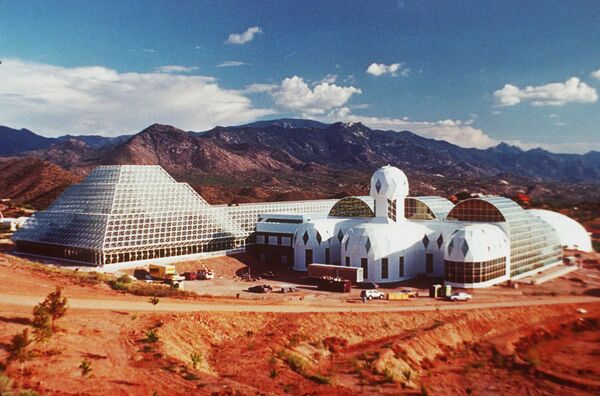Another station, which is NASA's Mars project, is located beyond the Arctic Circle, in the Haughton impact crater on Devon Island, Canada. Geological and glacial features of this island are close to the Martian ones, and its daytime temperatures are similar to the "summer" temperatures on the Red Planet.
But could people create an autonomous colony on Mars now, using only the technologies mankind has at the moment? Would those pioneers be able to live in the proper conditions?
"To establish the colony, which would be entirely self-contained, would be very difficult right now. In the first decades, such a colony would entirely depend on supplies from Earth. They will be in need of food, spare parts for sophisticated equipment and building materials," said Aleksandr Smoleevsky, a researcher at the Institute of Biomedical Problems of the Russian Academy of Sciences, who was a member of the Mars-500 program in 2010-2011 during a 520-day psychosocial isolation experiment conducted by the Russian space agency Roscosmos, the European ESA and China.
"Almost all scientific experiments on the creation of a ground-based autonomous colony have failed one way or another. Only two of them were more or less successful: BIOS-3, a Soviet experiment of the 1970s, when a crew of three managed to survive six months, offsetting up to 50 percent of their demand for food by their own forces; and Lunar Palace 1 carried out by China in 2014," Smoleevsky told Sputnik.


Another large-scale experiment, American Biosphere 2, which simulated a closed ecological system, has practically failed. It was a massive structure built by Space Biosphere Ventures and Texas billionaire Edward Bass in the Arizona desert. The construction occupied an area of one and a half hectare (15,000 square meters), with seven climate zones arranged there: they had their own mountains, a savanna, a desert, a swamp and even a little ocean up to 10 meters in-depth, with a living coral reef.

However, they failed to calculate all the possible scenarios. For example, the experimentalists hadn't considered the uncontrolled growth of microorganisms. As a result, bacteria and fungi multiplied, absorbed too much oxygen, so that an additional portion of gas had to be pumped for other organisms to survive. Ants and cockroaches also bred in large numbers. In addition, water condensed on the glass roof in the morning, and an artificial rain was pouring. Moreover, the researchers did not take into consideration such a phenomenon as the wind: it turned out that trees become fragile and break without regular swinging.
Aleksandr Smoleevsky also highlighted some other very important problems that hinder the creation of an autonomous colony on Mars. "The colony has to be provided with specialists in various spheres, such as engineers, technicians and doctors, as long as a great number of problems will have to be solved. But it is impossible to foresee what professionals will be necessary most of all. Moreover, there may be some loss during a long flight. And another problem is the compatibility of the first colonists with those who will arrive on Mars later," he explained.
"Women's issues" is likely to rise in the first Martian settlement, too, Bozhko believes. "Perhaps the first colonies must be formed exclusively by men, and women should be sent later. Female colonizers will have to sacrifice their procreation for a lifetime. Several generations of women will be forced to become like men and just work. Children could be sent to Mars as teenagers, but it will be impossible to bring them up with very small amounts of water, the dangers of bacteriological contamination and a lack of the right atmosphere. This situation may last for decades or even centuries," he said.
"I think the first woman, who will successfully give birth on Mars, will become history for starting new kinds of 'protein bodies' in the universe," Bozhko concluded.






